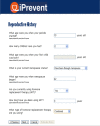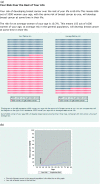iPrevent®: a tailored, web-based, decision support tool for breast cancer risk assessment and management
- PMID: 26909793
- PMCID: PMC4788692
- DOI: 10.1007/s10549-016-3726-y
iPrevent®: a tailored, web-based, decision support tool for breast cancer risk assessment and management
Abstract
We aimed to develop a user-centered, web-based, decision support tool for breast cancer risk assessment and personalized risk management. Using a novel model choice algorithm, iPrevent(®) selects one of two validated breast cancer risk estimation models (IBIS or BOADICEA), based on risk factor data entered by the user. Resulting risk estimates are presented in simple language and graphic formats for easy comprehension. iPrevent(®) then presents risk-adapted, evidence-based, guideline-endorsed management options. Development was an iterative process with regular feedback from multidisciplinary experts and consumers. To verify iPrevent(®), risk factor data for 127 cases derived from the Australian Breast Cancer Family Study were entered into iPrevent(®), IBIS (v7.02), and BOADICEA (v3.0). Consistency of the model chosen by iPrevent(®) (i.e., IBIS or BOADICEA) with the programmed iPrevent(®) model choice algorithm was assessed. Estimated breast cancer risks from iPrevent(®) were compared with those attained directly from the chosen risk assessment model (IBIS or BOADICEA). Risk management interventions displayed by iPrevent(®) were assessed for appropriateness. Risk estimation model choice was 100 % consistent with the programmed iPrevent(®) logic. Discrepant 10-year and residual lifetime risk estimates of >1 % were found for 1 and 4 cases, respectively, none was clinically significant (maximal variation 1.4 %). Risk management interventions suggested by iPrevent(®) were 100 % appropriate. iPrevent(®) successfully integrates the IBIS and BOADICEA risk assessment models into a decision support tool that provides evidence-based, risk-adapted risk management advice. This may help to facilitate precision breast cancer prevention discussions between women and their healthcare providers.
Keywords: BRCA1; Breast cancer; Chemoprevention; Decision support; Risk.
Figures





References
-
- Trainer AH, Thompson E, James PA. BRCA and beyond: a genome-first approach to familial breast cancer risk assessment. Discov Med. 2011;12(66):433–443. - PubMed
-
- National Institute of Health (NIH) Precision Medicine Initiative (2015) http://www.nih.gov/precisionmedicine/. Accessed Sept 2015
-
- Cancer Australia Advice about familial aspects of breast cancer and epithelial ovarian cancer (2010) https://canceraustralia.gov.au/publications-and-resources/cancer-austral.... Accessed Sept 2015
-
- Rebbeck TR, Friebel T, Lynch HT, Neuhausen SL, van’t Veer L, Garber JE, Evans GR, Narod SA, Isaacs C, Matloff E, Daly MB, Olopade OI, Weber BL. Bilateral prophylactic mastectomy reduces breast cancer risk in BRCA1 and BRCA2 mutation carriers: the PROSE Study Group. J Clin Oncol. 2004;22(6):1055–1062. doi: 10.1200/JCO.2004.04.188. - DOI - PubMed
Publication types
MeSH terms
Grants and funding
LinkOut - more resources
Full Text Sources
Other Literature Sources
Medical
Molecular Biology Databases
Miscellaneous

